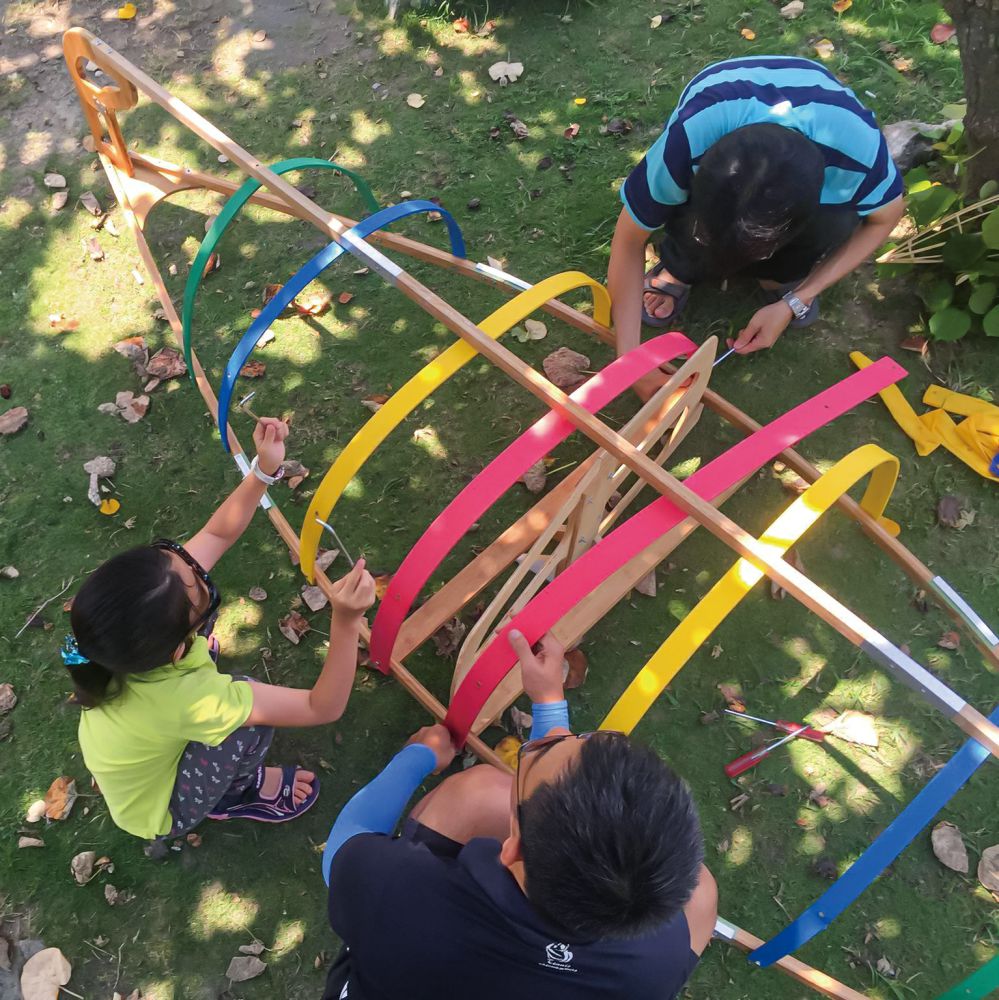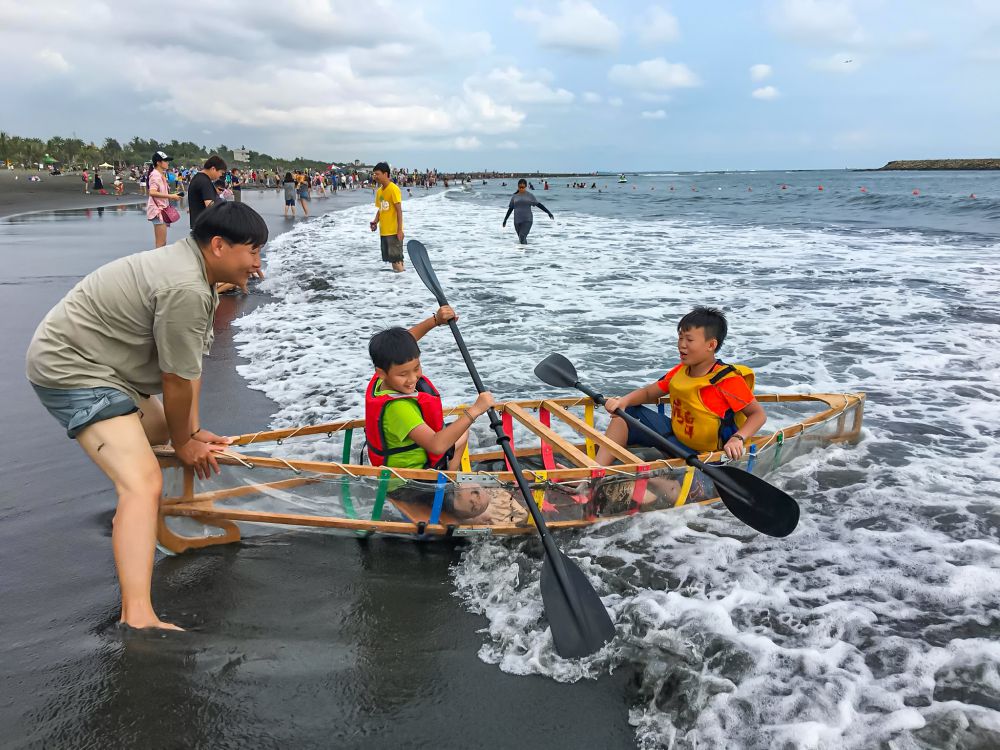發布日期:2023-10-20更新日期:2023-10-20
Setting Sail with Self-made Sampans

Siwan Wooden Boat(西灣海洋), which promotes boat-building experiences, is based at the NSYSU Startup Quarter(中山大學貨櫃創業基地), located on the campus of National Sun Yat-sen University in Kaohsiung. When explaining why he is motivated to promote self-built boats, founder Luo Guo-dong(羅國棟)begins by saying that, “during my time as a sociology department teaching assistant in the university, I came across an old photo of Cijin Island, taken by the U.S. military, and I noticed that the shape of the sampans in it was quite unique.”
Wooden sampans were once a crucial form of transportation, moving sand, gravel, finished goods, and people. After World War II, they were gradually replaced by modern ships. Luo says that, as Taiwan's shipbuilding industry modernized, a knowledge gap appeared. “Nobody knew how to build wooden boats. The master craftsmen hadn't passed on their skills, and no relevant documents or resources were available,” says Luo, who comes from a seafaring family.


After extensive research, Luo located Dong Ming-shan(董明山), who was highly skilled in handcrafting wooden boats. Through NSYSU's Wooden Boat Experiment Workshop, part of the university's “Reconstruction of Marginalized Community Identity” project, Master Dong was invited to teach participants how to build a vessel from scratch. In 2016, they successfully recreated two large sampans of the type that had been missing for over 40 years. Each weighed more than two metric tons. Luo points out that, “Master Dong's boat-building technique is vastly different from what's taught in naval architecture schools. These masters mostly rely on simple boat diagrams and mnemonic phrases.” He adds: “Taiwan's custom-made yachts can rival those from Italy, thanks to the skills of master craftsmen. Many details cannot be replicated with molds.”
“Want to get closer to the sea? It starts with building your own boat!” Luo says. He and his team have inherited Master Dong's mnemonic phrases and drew inspiration from IKEA's furniture assembly methods. They streamlined the boat-building process and introduced workshops where students enlarge boat diagrams to full size, cut various components from templates, gradually adjust boat pieces and frames to fit curved lines, and finally assemble, fix, and waterproof the hull. This process results in a functional sampan that can be launched into the water.
The experience of building one's own boat not only teaches individuals about shipbuilding principles, but it also ignites a spirit of maritime adventure within people, bringing them closer to the ocean, where they can enjoy the pleasures of the sea.